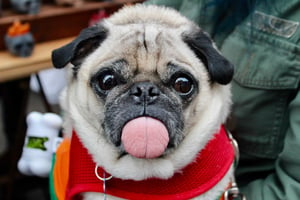Crate training is a great way to help your 10 week old puppy learn good habits and become a...
Crate Training Schedule for 6 Month Old Puppy
Crate training is a great way to help your 6 month old puppy learn good habits and develop a sense of security. It is important to create a consistent and positive crate training schedule to ensure your pup is comfortable and happy. This article provides tips and advice for developing a crate training schedule for your 6 month old puppy.
Understanding Crate Training
Crate training is a great way to give your puppy a safe, secure and comfortable place to call their own. It should be used as a place for your puppy to relax and have time to themselves. It should not be used as a form of punishment, but rather as a positive place to help your puppy feel secure and comfortable.
Crate training also helps to establish boundaries and good habits in your puppy. Your puppy will learn that the crate is their space and they will learn to go in it when they need some quiet time or when you need to leave the house. It also helps to prevent destructive behaviours and other unwanted habits.
Creating a Crate Training Schedule
Start slow: When you first introduce your puppy to the crate, it is important to start slow and make sure they are comfortable. Start by leaving the door of the crate open and providing treats and toys for your puppy to explore. Allow them to become familiar with the crate and make sure they understand it is a safe and comfortable place.
Introduce regular crate time: Once your puppy is comfortable with the crate, you can start to introduce regular crate time. Start off with short periods of time, such as 10-15 minutes at a time and gradually increase the length of time. You can also start to leave the house for short periods of time and gradually increase the length of time you are away. This will help your puppy to become used to being in the crate when you are not around.
Reward good behaviour: It is important to reward your puppy when they are being good and following the crate training schedule. This could be in the form of treats, verbal praise or a favorite toy. This will help your puppy to understand that they are doing the right thing and will help to reinforce good behaviour.
Be consistent: It is important to be consistent with the crate training schedule. This means setting a routine for your puppy and sticking to it. This will help your puppy to understand what is expected of them and will help to reinforce good behaviour.
Things to Avoid
When crate training your 6 month old puppy, there are some things to avoid. These include:
- Using the crate as punishment: The crate should not be used as a form of punishment. This will cause your puppy to associate the crate with negative feelings and will not help with the crate training process.
- Leaving your puppy in the crate for too long: It is important to not leave your puppy in the crate for too long. This will cause your puppy to become bored and frustrated and can lead to unwanted behaviours.
- Forcing your puppy into the crate: It is important to never force your puppy into the crate. This will cause your puppy to become scared and uncomfortable and will not help with the crate training process.
Conclusion
Crate training is a great way to help your 6 month old puppy learn good habits and develop a sense of security. It is important to create a consistent and positive crate training schedule to ensure your pup is comfortable and happy. By following these tips and advice, you can create a crate training schedule that will help your puppy to become comfortable and happy in their crate.



